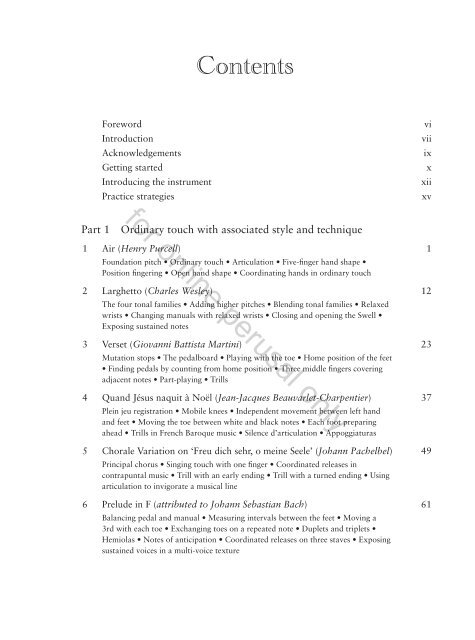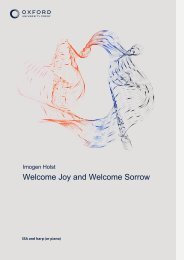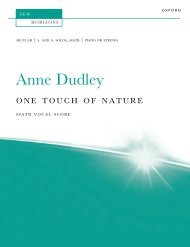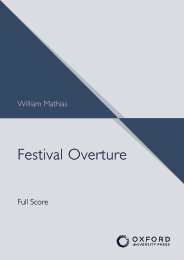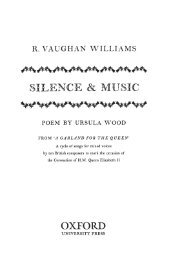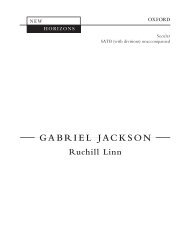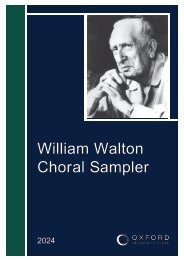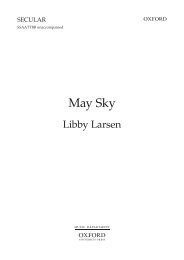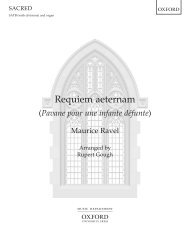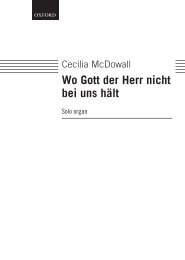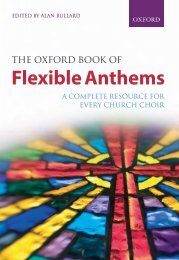New Oxford Organ Method
A single piece of repertoire is the primary focus for each chapter, with preparatory exercises providing the necessary technical work building towards the piece. Each lesson covers four main topics, which are systematically developed: practice methods, registration, fingering and pedalling, and historically-informed interpretation. The method is for keyboard players of any age who are establishing first steps at the organ with or without a teacher. It will also serve more experienced organists who want to improve their technique.
A single piece of repertoire is the primary focus for each chapter, with preparatory exercises providing the necessary technical work building towards the piece. Each lesson covers four main topics, which are systematically developed: practice methods, registration, fingering and pedalling, and historically-informed interpretation. The method is for keyboard players of any age who are establishing first steps at the organ with or without a teacher. It will also serve more experienced organists who want to improve their technique.
- No tags were found...
You also want an ePaper? Increase the reach of your titles
YUMPU automatically turns print PDFs into web optimized ePapers that Google loves.
Contents<br />
Foreword<br />
Introduction<br />
Acknowledgements<br />
Getting started<br />
Introducing the instrument<br />
Practice strategies<br />
vi<br />
vii<br />
ix<br />
x<br />
xii<br />
xv<br />
for online perusal only<br />
Part 1 Ordinary touch with associated style and technique<br />
1 Air (Henry Purcell) 1<br />
Foundation pitch • Ordinary touch • Articulation • Five-finger hand shape •<br />
Position fingering • Open hand shape • Coordinating hands in ordinary touch<br />
2 Larghetto (Charles Wesley) 12<br />
The four tonal families • Adding higher pitches • Blending tonal families • Relaxed<br />
wrists • Changing manuals with relaxed wrists • Closing and opening the Swell •<br />
Exposing sustained notes<br />
3 Verset (Giovanni Battista Martini) 23<br />
Mutation stops • The pedalboard • Playing with the toe • Home position of the feet<br />
• Finding pedals by counting from home position • Three middle fingers covering<br />
adjacent notes • Part-playing • Trills<br />
4 Quand Jésus naquit à Noël (Jean-Jacques Beauvarlet-Charpentier) 37<br />
Plein jeu registration • Mobile knees • Independent movement between left hand<br />
and feet • Moving the toe between white and black notes • Each foot preparing<br />
ahead • Trills in French Baroque music • Silence d’articulation • Appoggiaturas<br />
5 Chorale Variation on ‘Freu dich sehr, o meine Seele’ (Johann Pachelbel) 49<br />
Principal chorus • Singing touch with one finger • Coordinated releases in<br />
contrapuntal music • Trill with an early ending • Trill with a turned ending • Using<br />
articulation to invigorate a musical line<br />
6 Prelude in F (attributed to Johann Sebastian Bach) 61<br />
Balancing pedal and manual • Measuring intervals between the feet • Moving a<br />
3rd with each toe • Exchanging toes on a repeated note • Duplets and triplets •<br />
Hemiolas • Notes of anticipation • Coordinated releases on three staves • Exposing<br />
sustained voices in a multi-voice texture


